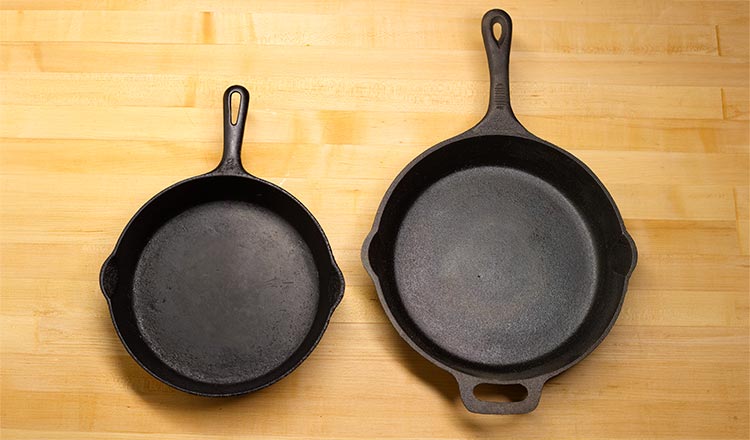Taking care of your pans will help them last longer and cook better, no matter what type you prefer.
Nonstick pans are the most delicate and best saved for jobs like cooking eggs or crêpes. Wash them gently without harsh scrubbers, and avoid using metal utensils that can scratch the coating. To keep the surfaces from getting damaged in storage, place a soft towel between pans if you stack them.
Stainless steel–lined pans are more durable and don’t need much special care. When cleaning, use salt or a nylon scrubber instead of steel wool to avoid scratching the surface.
Cast iron pans are kitchen workhorses and can last a lifetime if you care for them properly. Before cooking, brush the inside of the pan with a thin layer of oil, and remember that the handle will get very hot, so use an oven mitt. For best results, avoid putting very cold foods into a hot cast iron pan, as they tend to stick.
Cast iron also needs to be seasoned before the first use and from time to time afterward. Seasoning means baking oil into the surface to create a natural nonstick layer. To season, lightly coat the pan with oil, then bake it in a 300°F oven for about an hour. After cooking, it’s usually best just to wipe the pan clean or rinse with hot water and a stiff brush—avoid soap, which strips away the seasoning. If food does stick, boil a little water in the pan to loosen it. Always dry the pan thoroughly and rub it with a little oil before putting it away to prevent rust.
If your cast iron loses its shine, develops rust, or starts to taste metallic, it’s time to reseason. Wash it with soap and hot water (the only time you should use soap), dry it well, coat it inside and out with oil, and bake it upside down in a 375°F oven for two hours. Let it cool, and your pan will be ready to go again—good as new.


